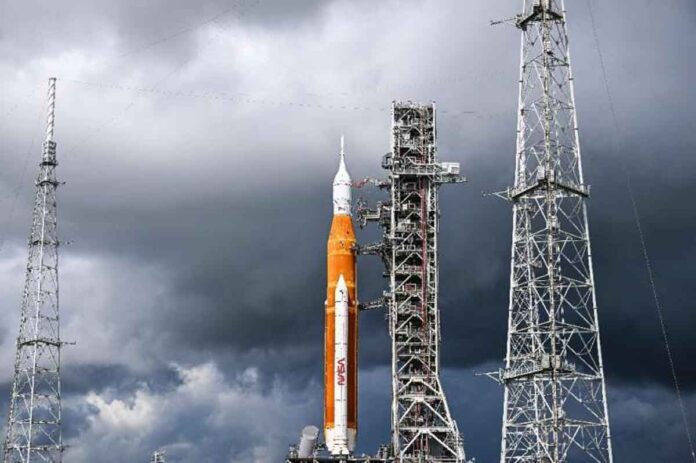NASA is considering September 23 and September 27 as possible launch dates for its Artemis 1 mission to the Moon, according to senior official Jim Free.
Two previous attempts were cancelled due to technical issues with the massive Space Launch System rocket, including a fuel leak.
The launch window for the 23rd will open at 6:47am (1047 GMT), while the launch window for the 27th will open at 11:37am (1537 GMT), according to Free, associate administrator for the agency’s exploration systems development directorate.
The dates were chosen to avoid a clash with the DART mission, which will test the ability of a probe to divert an asteroid on September 26.
Both missions require use of an international array of antennas called the Deep Space Network.
However, the launch dates are still contingent on NASA receiving a special waiver to avoid retesting batteries on an emergency flight system, which is used to destroy the rocket if it deviates from its designated range and lands in a populated area.
If the waiver is not granted, the rocket will have to be wheeled back to its assembly building, causing the timeline to be pushed back several weeks.
Mike Bolger, exploration ground systems manager, added that teams were working to replace seals to fix the hydrogen leak issue, which could be finished by the end of Thursday, paving the way for a tanking test on September 17.
The Artemis 1 space mission aims to test both the SLS and the unmanned Orion capsule that sits atop it in preparation for future Moon-bound missions with humans aboard.
The spacecraft will take several days to reach the Moon after launch, flying around 60 miles (100 kilometres) at its closest approach.
The capsule’s engines will be fired to reach a distant retrograde orbit (DRO) of 40,000 miles beyond the Moon, a record for a spacecraft designed to carry humans.
The trip is expected to last several weeks, with one of the main goals being to test the capsule’s heat shield, which is the largest ever built at 16 feet (5 metres) in diameter.
Artemis is named after the Greek god Apollo’s twin sister, after whom the first Moon missions were named.
The following mission, Artemis 2, will send astronauts to the Moon without landing on its surface, while the third, scheduled for the mid-2020s, will place the first woman and person of color on lunar soil.
NASA plans to build a lunar space station called Gateway and maintain a sustained presence on the Moon in order to learn how to survive extremely long space missions in preparation for a mission to Mars in the 2030s.

